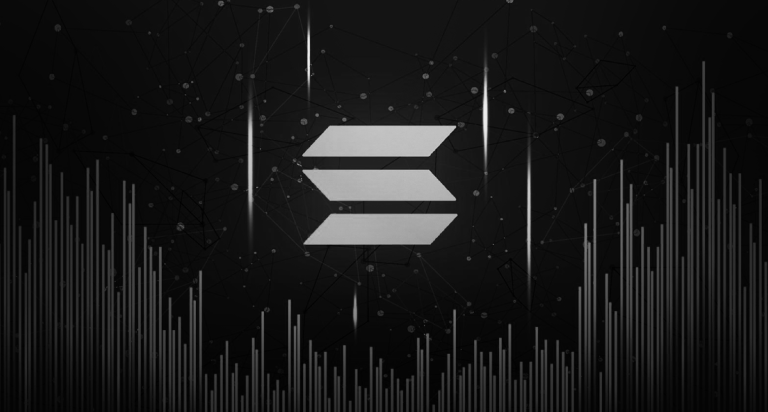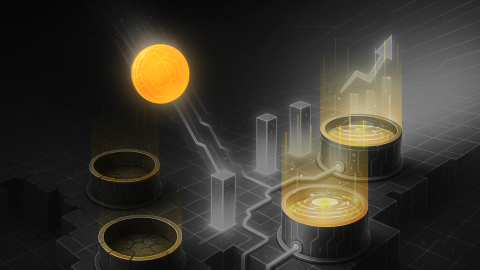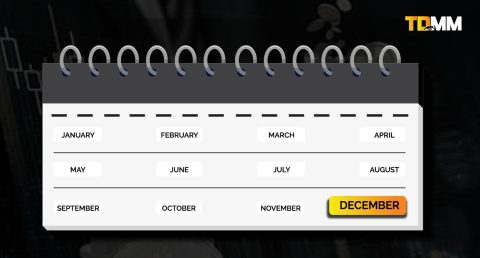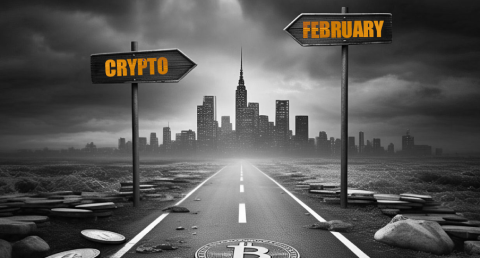Solana’s story began with a bold question: Can blockchain technology scale without sacrificing speed or decentralization? In 2017, Anatoly Yakovenko envisioned a network capable of processing transactions faster than traditional financial systems, with costs low enough to make mass adoption viable. From this vision emerged Solana, a high-performance blockchain that now sets benchmarks for speed, scalability, and innovation in the crypto space.
As this case study unfolds, we’ll explore the technical innovations, ecosystem growth, challenges, and future prospects that have defined Solana’s journey. From its ambitious beginnings to its status as a dominant force in blockchain technology, Solana continues to push the boundaries of what is possible in decentralized systems.
Tokenomics and Allocation
Solana’s tokenomics are designed to ensure long-term sustainability by incentivizing validators and developers while maintaining decentralization. This balanced allocation model provides confidence in the platform’s growth trajectory.
As of Q4 2024, approximately 65%-66% of SOL is staked, reducing circulating supply and contributing to price stability. While Solana’s tokenomics remain inflationary (current rate ~4.8%), mechanisms like transaction fee burns offset inflation, creating favorable conditions for long-term holders and short-term traders alike.
Significance of Token Allocation
Solana’s tokenomics ensure that stakeholders across the board—from investors to developers—are motivated to contribute to the platform’s success. The validator sale allocation also encourages decentralization and robust network security by attracting a diverse pool of participants.
Historical Milestones and Evolution
Solana’s growth is marked by landmark events that have shaped its trajectory from a nascent project to one of the notable blockchains trusted in decentralized finance, gaming, and beyond. These milestones highlight its technological advancements and market influence.
1. Early Days and Funding
- 2017: Anatoly Yakovenko begins conceptualizing PoH based on his experiences with distributed systems.
- 2018: Yakovenko publishes the first whitepaper on PoH, laying the groundwork for Solana.
- 2019: Solana Labs raises $20 million in Series A funding led by Multicoin Capital.
- 2020: Solana’s mainnet beta goes live, setting a new standard for blockchain scalability and developer tools.
2. Key Achievements
- 2021: The “Solana Summer” saw explosive growth in DeFi, NFTs, and gaming, with projects like Serum and Magic Eden flourishing.
- 2022: Despite network outages, Solana continued to expand its ecosystem, addressing validator-related issues and improving stability.
- 2023-2024: Achieved a remarkable milestone of 6.4 million daily active users, cementing its position as one of the most widely adopted blockchains.
- 2025: Emerges as a leader in tokenized real-world assets, focusing on real estate, healthcare, and supply chain integration.
Breaking Down Solana’s Architecture: Why It Stands Out
Building upon Solana’s foundational innovations, its architectural design integrates several key components that collectively enhance its performance, scalability, and security.
1. Proof of History (PoH): The Core Innovation
As discussed earlier, PoH serves as Solana’s defining feature, timestamping transactions and enabling the network to order them efficiently without extensive communication between nodes.
2. Tower BFT (Byzantine Fault Tolerance)
Tower BFT allows validators to reach consensus with reduced latency and messaging overhead. This integration accelerates transaction finality and enhances network efficiency.
3. Gulf Stream
Eliminates mempools by forwarding transactions ahead of time, significantly reducing confirmation times. This mechanism facilitates high transaction throughput, making it a critical feature for applications that require real-time data processing.
4. Sealevel
Solana’s parallel smart contract runtime, Sealevel, allows the simultaneous processing of thousands of smart contracts. This optimization ensures efficient resource utilization, enabling the network to scale horizontally.
5. Pipelining
Pipelining involves assigning different stages of transaction validation to specific hardware units. This streamlined approach ensures efficient transaction processing and minimizes delays, maintaining Solana’s reputation for speed.
6. Cloudbreak
A horizontally scaled state architecture, Cloudbreak facilitates concurrent reads and writes across the network. This architecture supports Solana’s high throughput requirements while maintaining data integrity.
7. Archivers
To prevent validators from being overburdened with data storage responsibilities, Solana employs a network of nodes called Archivers. These nodes store historical data, ensuring decentralization and data availability without compromising performance.
Unified Advantage
By integrating these components, Solana achieves unmatched scalability, speed, and efficiency. Capable of processing over 65,000 transactions per second, its architecture offers a scalable platform for decentralized applications, cementing its position as a leading blockchain in the digital ecosystem.
This architecture positions Solana as a powerful competitor in the blockchain space, capable of meeting the demands of a rapidly evolving digital economy. As the case study progresses, we will explore how this robust infrastructure has been leveraged to build a thriving ecosystem of decentralized applications and services.
Ecosystem Growth: Key Metrics
Solana’s ecosystem has experienced remarkable growth, solidifying its position as a leading blockchain platform. This expansion is evident across various sectors, including decentralized finance (DeFi), non-fungible tokens (NFTs), and emerging areas like Decentralized Physical Infrastructure Networks (DePIN) and Real-World Asset (RWA) tokenization.
1. Developer Activity
Solana’s rapid developer adoption is evident globally, with the platform ranking as the #1 ecosystem in India and securing strong positions in other major markets such as the US, UK, Canada, and China. The chart below illustrates its growing influence in developer communities across these regions.
Its developer ecosystem has seen remarkable growth. In 2024, active developers increased by an impressive 83%, surpassing Ethereum’s growth rate. This surge was fueled by regular hackathons, grants, and developer incentives, driving innovation in areas like gaming, DeFi, and infrastructure. Key projects exemplify this innovation:
- Serum: A high-speed decentralized exchange.
- Star Atlas: A futuristic gaming metaverse.
- Magic Eden: A user-friendly NFT marketplace.
- Helium Migration: Integration with Solana to build decentralized wireless infrastructure.
2. Daily Active Users (DAUs)
Solana has demonstrated strong user engagement. By the end of 2024:
- Solana: 6.4 million DAUs, reflecting a 19% growth over the previous month.
- Ethereum: 450,000 DAUs.
- Bitcoin: 454,600 DAUs.
This highlights Solana’s superior adoption and usability compared to other major blockchains.
3. Institutional Market Adoption
Solana has increasingly gained traction among financial institutions. Use cases include:
- Cross-Border Payments: Solana facilitates fast and low-cost international transactions with reduced settlement times.
- Tokenized Asset Platforms: Solana enables fractional ownership of real estate and other high-value assets, making investments more accessible to a global audience
.
Solana’s rapid adoption and ecosystem growth have not gone unnoticed. Its recognition as one of the top blockchain platforms is evidenced in Grayscale Research’s Top 20 list for Q1 2025. This ranking highlights Solana’s competitive standing among leading crypto projects like Bitcoin, Ethereum, and Chainlink, showcasing its growing influence in the blockchain space.
Competitive Analysis: Solana vs. Ethereum
Transaction Speed and Scalability
- Ethereum: Traditionally processes ~15 transactions per second. Ethereum addresses scalability challenges through Layer-2 solutions and sharding, a key component of its roadmap.
- Solana: Designed for high scalability, Solana achieves a throughput of up to 65,000 TPS, with innovations like the Firedancer validator set to push this to 1 million TPS by 2025.
Transaction Costs
- Ethereum: Gas fees range from $3–$10 but can spike significantly during congestion.
- Solana: Fees remain consistently low at approximately $0.00025 per transaction, making it ideal for high-frequency, low-cost applications.
Ecosystem Maturity
- Ethereum: Boasts a mature ecosystem with 4,700+ dApps and 50% dominance in DeFi TVL.
- Solana: Rapidly growing with over 350 dApps, highlighting its emphasis on speed and cost-efficiency.
Market Growth
- Ethereum: Holds a strong market position with $397B in market capitalization.
- Solana: Shows dynamic growth, with a 122% increase in market value during 2024.
Use Cases: Practical Applications
Solana’s high-performance blockchain architecture has enabled a diverse range of practical applications across various industries. These use cases illustrate the flexibility and power of Solana’s technology:
1. Decentralized Finance (DeFi)
- Raydium: An automated market maker (AMM) and liquidity provider built on the Solana blockchain, offering fast and low-cost token swaps.
- Serum: A decentralized exchange (DEX) that provides high-speed trading and low transaction fees, leveraging Solana’s scalability.
2. Non-Fungible Tokens (NFTs) and Digital Art
- Metaplex: A platform that allows creators to launch their own NFT storefronts, facilitating the creation and sale of digital art and collectibles.
- Solanart: An NFT marketplace where users can discover, buy, and sell NFTs, benefiting from Solana’s low transaction costs.
3. Gaming and Metaverse
- Star Atlas: A next-generation gaming metaverse that combines blockchain mechanics with traditional game design, offering players ownership of in-game assets.
- Aurory: A play-to-earn gaming platform where players can explore a rich and diverse universe, collecting NFTs and participating in battles.
4. Decentralized Autonomous Organizations (DAOs)
- Mango DAO: A community-governed organization that manages Mango Markets, a decentralized trading platform on Solana.
- Grape Protocol: Provides tools for building DAOs, enabling decentralized social networking and community building on Solana.
5. Supply Chain and Logistics
- Synthetify: A decentralized protocol for synthetic assets, allowing users to trade and create synthetic commodities, stocks, and other real-world assets.
- Solible: A marketplace for tokenized physical and digital goods, bridging the gap between blockchain and real-world items.
6. Real Estate Tokenization
- Realio: A platform that enables the tokenization of real estate assets, allowing for fractional ownership and increased liquidity in the real estate market.
7. Decentralized Identity and Authentication
- Solana Name Service (SNS): Provides a decentralized domain name service on Solana, allowing users to map domain names to their wallet addresses.
- Civic: Offers decentralized identity verification, enhancing security and compliance for applications built on Solana.
These use cases demonstrate Solana’s versatility and its growing ecosystem, which continues to attract developers and enterprises seeking scalable and efficient blockchain solutions.
Challenges Faced by Solana
While Solana has achieved remarkable success, it has faced significant challenges that have impacted its network stability, security, and ecosystem maturity. These challenges offer insights into areas for improvement as Solana continues to evolve.
1. Network Outages
Solana has experienced multiple network outages, raising concerns about reliability and scalability.
- September 2021: A surge in transactions caused the network to fork, leading to a 17-hour outage.
- May 2022: The network went offline for approximately seven hours due to bot activity overwhelming the system.
- October 2022: A consensus bug resulted in a six-hour outage, highlighting stability issues.
2. Security Vulnerabilities
The platform has faced security breaches that have undermined user confidence.
- August 2022: Approximately 9,231 Solana wallets were hacked, resulting in the theft of around $8 million.
3. Centralization Concerns
Solana’s validator structure and consensus mechanism have sparked debates about decentralization.
- Validator Distribution: With a smaller validator network (~2,000), Solana has been criticized for potential centralization, which could impact network security and governance.
4. Regulatory Scrutiny
Solana has attracted attention from regulatory bodies, affecting its market perception.
- June 2023: The U.S. SEC included Solana in its lawsuit against Coinbase, alleging that certain tokens qualified as securities.
5. Ecosystem Maturity
While Solana’s ecosystem is growing, it still lags behind more established platforms in some areas.
- Development Tools: The availability of developer resources and tools, though expanding, remains less comprehensive than Ethereum’s.
6. Smart Contract Risks
Developers have identified challenges in Solana’s smart contract architecture.
- Complexity: Writing secure smart contracts requires a deep understanding of Solana’s unique architecture.
- Testing and Auditing: Thorough testing and auditing are essential to ensure security and functionality, increasing development time and costs.
Addressing Challenges
Solana has taken several steps to address these challenges:
- Improving Network Stability: Enhancing validator participation and implementing error-handling mechanisms.
- Strengthening Security: Rolling out security patches and incentivizing ethical hacking through bug bounty programs.
- Fostering Decentralization: Increasing validator incentives and simplifying participation requirements.
- Enhancing Ecosystem Tools: Expanding developer tools and resources to make the platform more accessible.
These measures demonstrate Solana’s commitment to overcoming its limitations and strengthening its position as a leading blockchain platform.
Best Practices for Investors, Businesses, and Developers
Solana’s rapid ascent in the blockchain ecosystem presents unique opportunities for investors, businesses, and developers. To effectively navigate and capitalize on this dynamic landscape, consider the following best practices tailored to each group.
For Investors
1. Conduct Thorough Due Diligence
- Project Evaluation: Assess the fundamentals of projects within the Solana ecosystem, including their development teams, technological innovations, and market potential.
- Risk Assessment: Be aware of the inherent volatility in the cryptocurrency market and evaluate your risk tolerance accordingly.
2. Diversify Investments
- Portfolio Balance: Avoid over-concentration in a single asset by diversifying across various projects and sectors within the Solana ecosystem.
- Stay Informed: Regularly monitor developments and news related to Solana to make informed investment decisions.
For Businesses
1. Leverage Solana’s High Performance
- Scalability: Utilize Solana’s high throughput and low transaction costs to build applications that require rapid and cost-effective transactions.
- Integration: Consider integrating Solana’s blockchain solutions to enhance operational efficiency and offer innovative services.
2. Engage with the Solana Community
- Collaboration: Participate in Solana’s active community to gain insights, support, and potential partnerships.
- Adherence to Standards: Follow Solana’s development guidelines and best practices to ensure compatibility and security.
For Developers
1. Utilize Solana’s Developer Resources
- Comprehensive Guides: Access Solana’s official developer guides and tutorials to understand the platform’s architecture and development tools.
- Development Frameworks: Employ frameworks like Anchor to streamline smart contract development and enhance security.
2. Prioritize Security and Optimization
- Secure Coding Practices: Implement robust security measures to prevent vulnerabilities in your applications.
- Performance Optimization: Optimize your applications for efficiency, considering Solana’s unique architecture and capabilities.
3. Continuous Learning and Adaptation
- Stay Updated: Keep abreast of the latest developments, tools, and best practices within the Solana ecosystem to maintain a competitive edge.
By adhering to these best practices, investors, businesses, and developers can effectively engage with the Solana ecosystem, leveraging its strengths to achieve their respective goals.
Future Outlook
The future of Solana looks promising, fueled by ongoing technological advancements, ecosystem expansion, and growing institutional interest. As blockchain adoption matures, Solana is poised to lead innovations across various domains, solidifying its reputation as a high-performance blockchain platform.
Technological Advancements
Ecosystem Expansion
Solana’s ecosystem growth is expected to accelerate, particularly in the following sectors:
- DeFi: Enhanced staking mechanisms and lending protocols are set to attract institutional investors.
- Gaming and Metaverse: Continued partnerships with gaming platforms and metaverse developers will broaden the adoption of Solana’s blockchain.
- NFTs: User-friendly marketplaces like Magic Eden will capitalize on the growing demand for non-fungible tokens.
- Tokenization: Real estate, commodities, and intellectual property tokenization are emerging as key drivers of Solana’s use cases.
Institutional Adoption and Regulation
Market Projections
While market fluctuations are inevitable, Solana’s fundamentals suggest a positive trajectory:
- 2025: Analysts predict moderate growth with SOL stabilizing between $213 and $259, supported by steady ecosystem expansion.2030 and Beyond: Long-term projections estimate SOL could reach $466 to $600, driven by technological innovation and widespread adoption.
- 2030 and Beyond: Long-term projections estimate SOL could reach $466 to $600, driven by technological innovation and widespread adoption
Closing Thoughts
Solana’s journey from an ambitious concept to a high-performance blockchain symbolizes the evolution of decentralized systems and their transformative potential. By addressing critical challenges in scalability, speed, and cost-efficiency, Solana has redefined what blockchain platforms can achieve, empowering developers, businesses, and communities worldwide.
As one of the most promising blockchain ecosystems, Solana exemplifies resilience and innovation, paving the way for a more inclusive and efficient digital future. While challenges persist, its continued evolution and adoption will undoubtedly shape the trajectory of decentralized technologies.
P.S. This isn’t financial advice. Please do your own research before making any financial decisions.
References
- Official Solana Documentation
- Grayscale Q1 2025 Research
- Solana Ecosystem Case Studies
- Blockchain Status Updates
- Solana (SOL) Price Prediction
- Risks & Limitations of Solana Smart Contracts
- Real-World Use Cases of the Solana Blockchain
- Solana Vs. Ethereum: Which Blockchain Will Shape the Future of Crypto?
- Solana Developer and Ecosystem Growth in 2024
- Solana’s Ecosystem Growth: From DeFi to Emerging Sectors
- Why Solana Is the Blockchain of the Future: Speed, Scalability, and Security
- What is Solana (SOL)?
- The History of Solana





